Abstract
When human plasma is mixed with testosterone-3H and subjected to electrophoresis on paper in glycine acetate buffer at pH 8.6, at least two proteins other than albumin bind the testosterone. In normal women 80.5 ± 1.9% (SEM) of the recovered radioactivity migrates with the β-globulins, 7.3 ± 0.80% with the inter-α-globulins, and 4.3 ± 0.40% with albumin. In normal men the percentages are 69.3 ± 3.0%, 14.3 ± 1.6%, and 6.2 ± 1.1%, respectively. These differences between men and women in binding among the β-globulins and inter-α-globulins are statistically significant (P < 0.001). The highest percentages of radioactivity associated with the β-globulins are seen in infants of both sexes, men receiving diethylstillbestrol, and pregnant women. These same subjects have the lowest percentages of radioactivity associated with the inter-α-globulins. Experiments with carrier testosterone indicate that at least some of the differences between the normal men and women and infants can be explained by differences in the concentration of endogenous testosterone. This factor alone, however, cannot explain the increased binding among the β-globulins in the men receiving diethylstilbestrol or in the pregnant females. In this system estrone, estradiol, dehydroisoandrosterone, androsterone, 17α-hydroxyprogesterone, and 19-nortestosterone compete with testosterone for binding sites on the proteins. None is as potent as testosterone itself.
Full text
PDF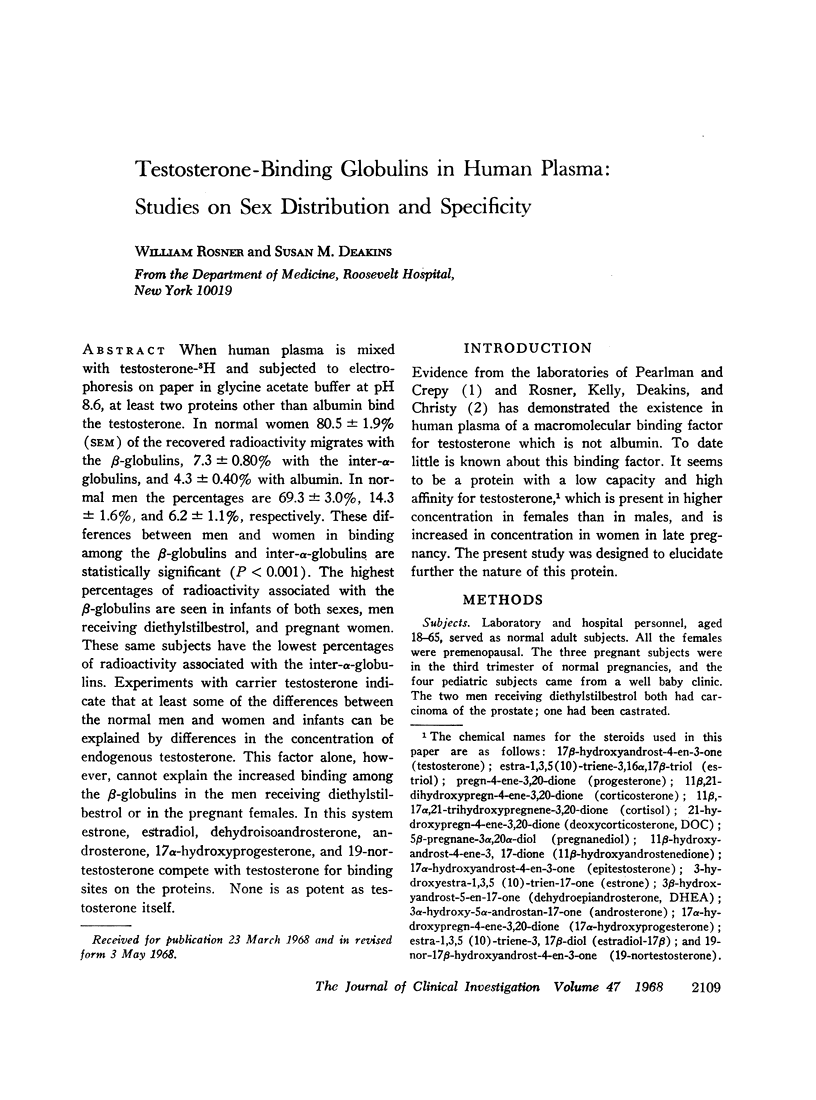
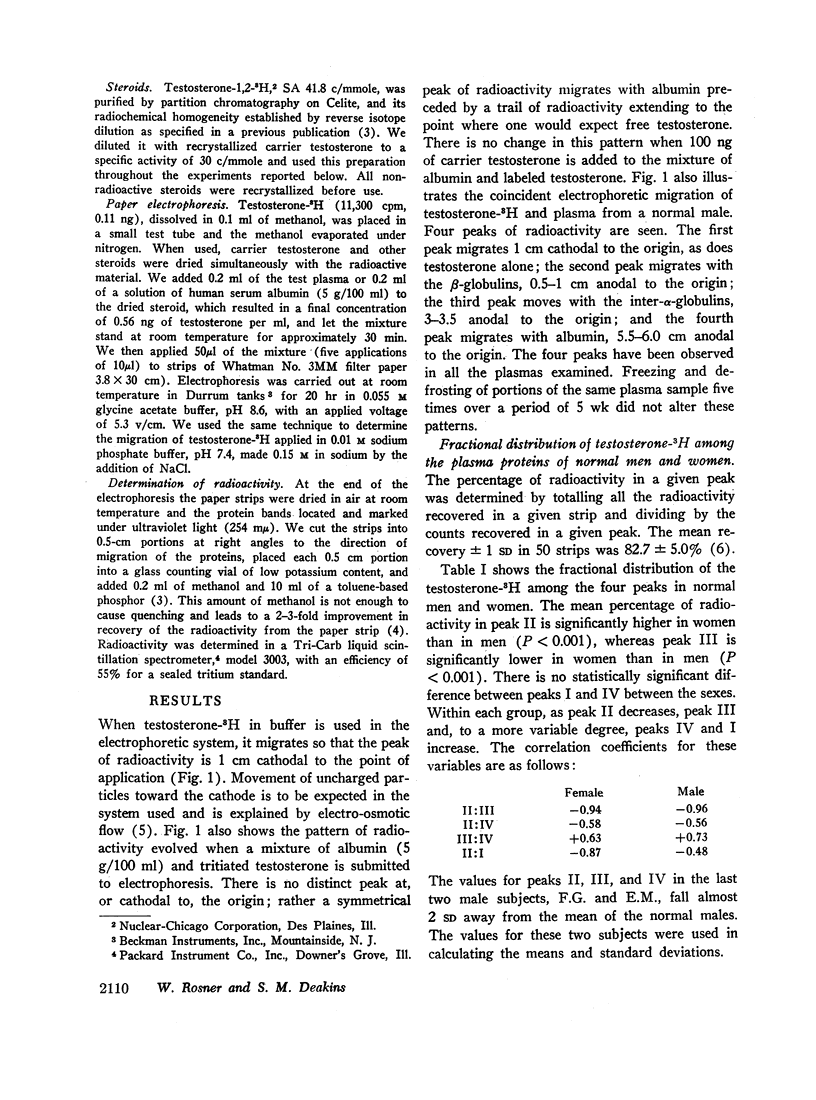
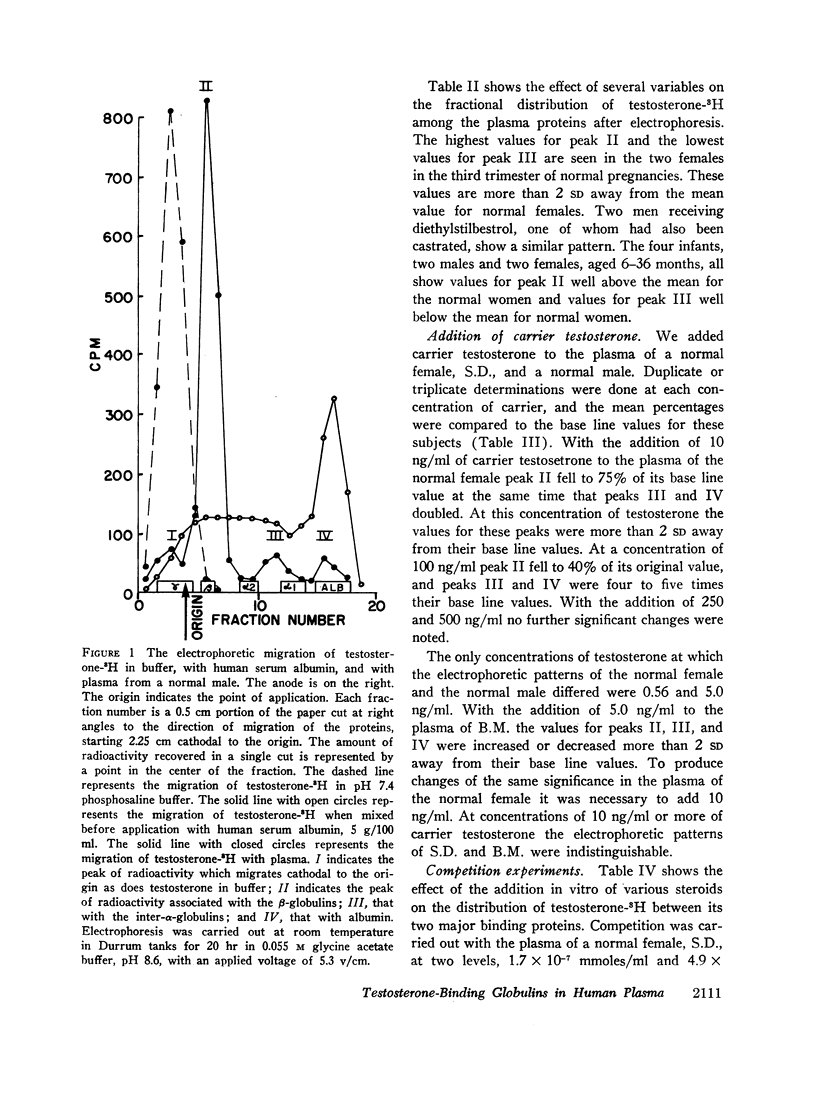
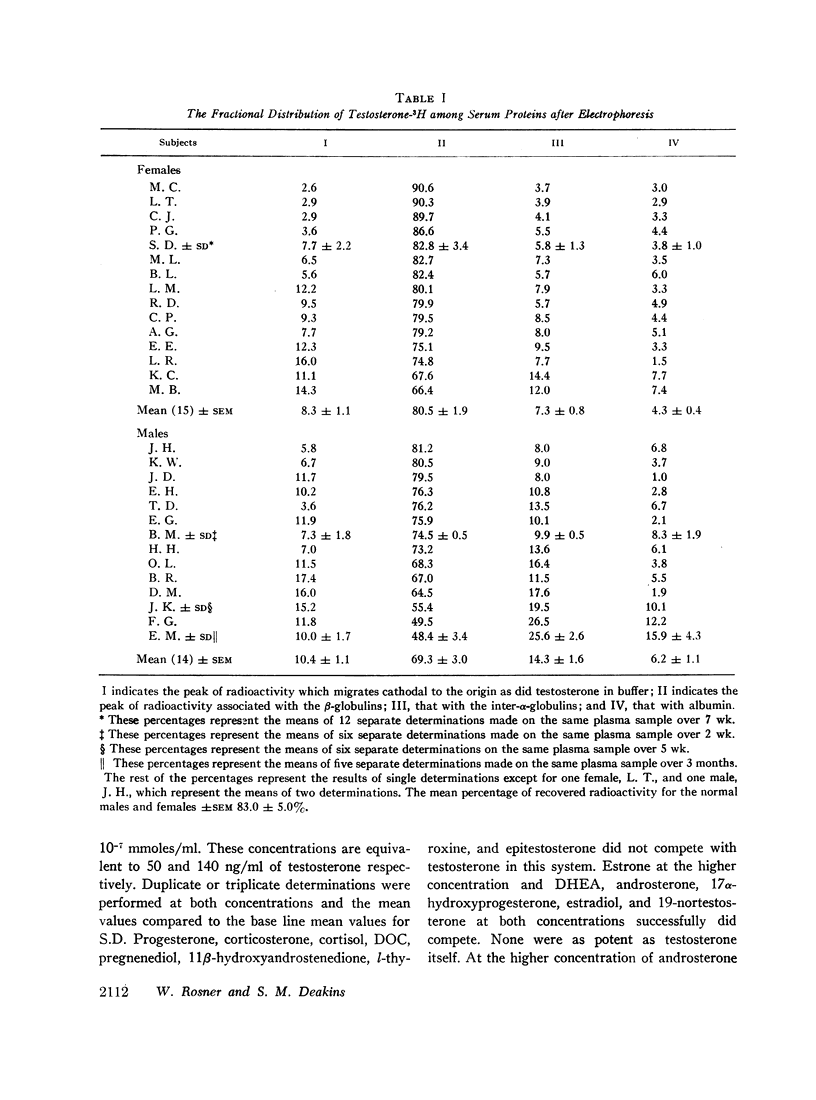
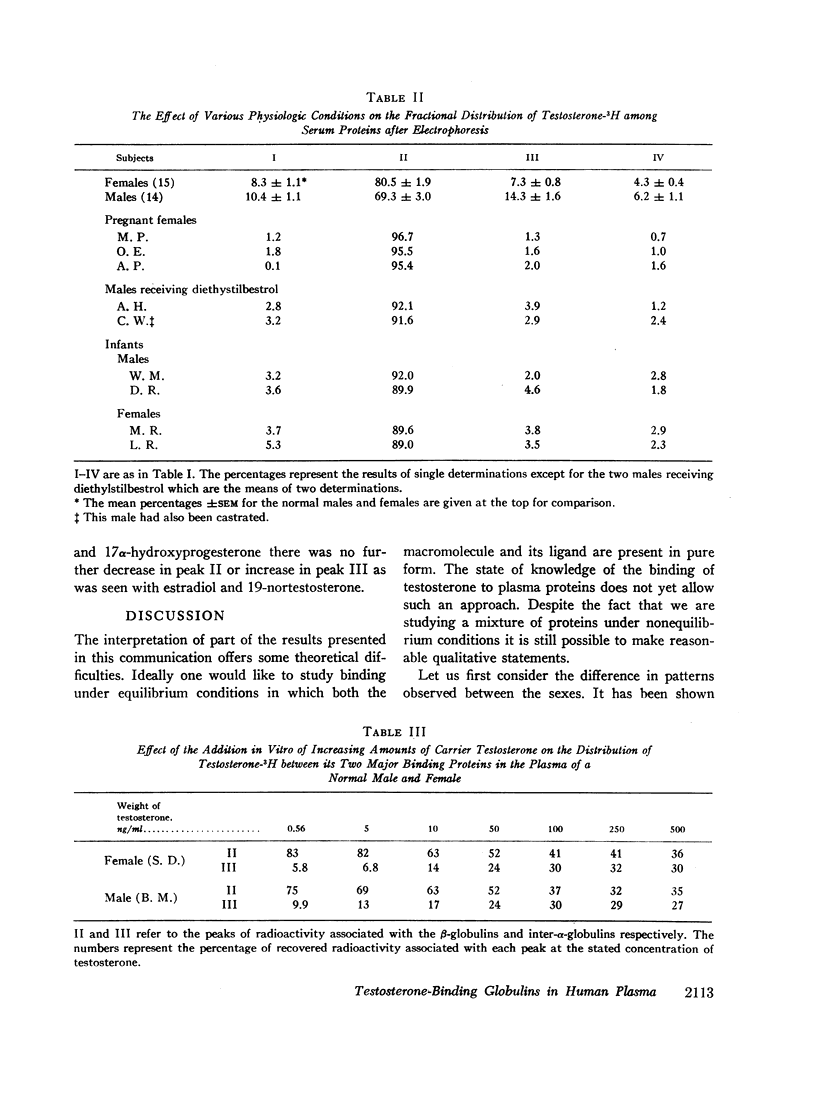
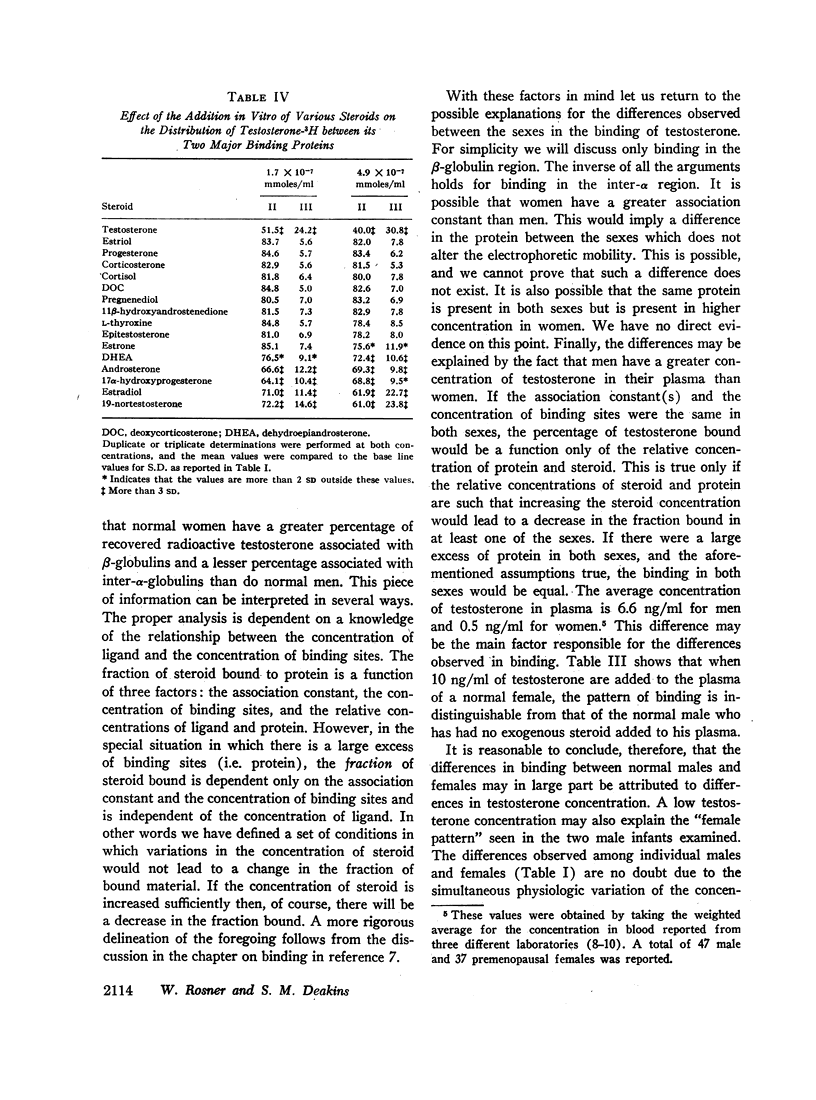
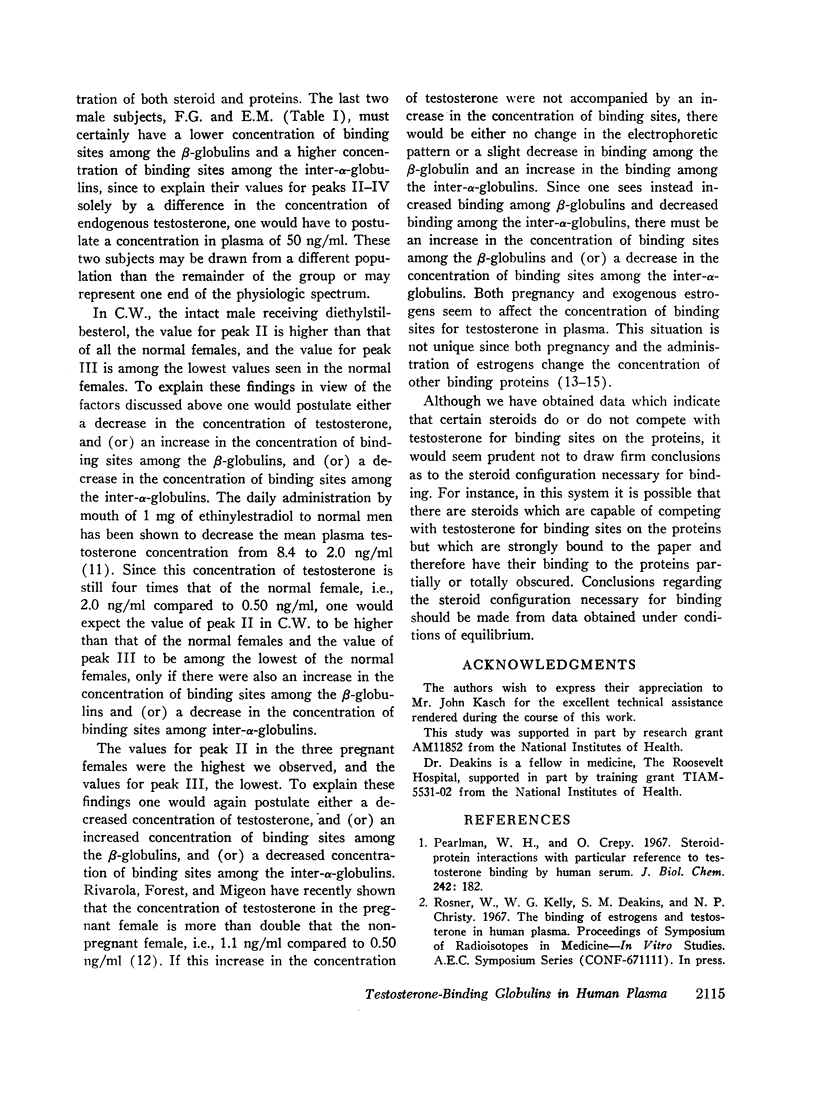
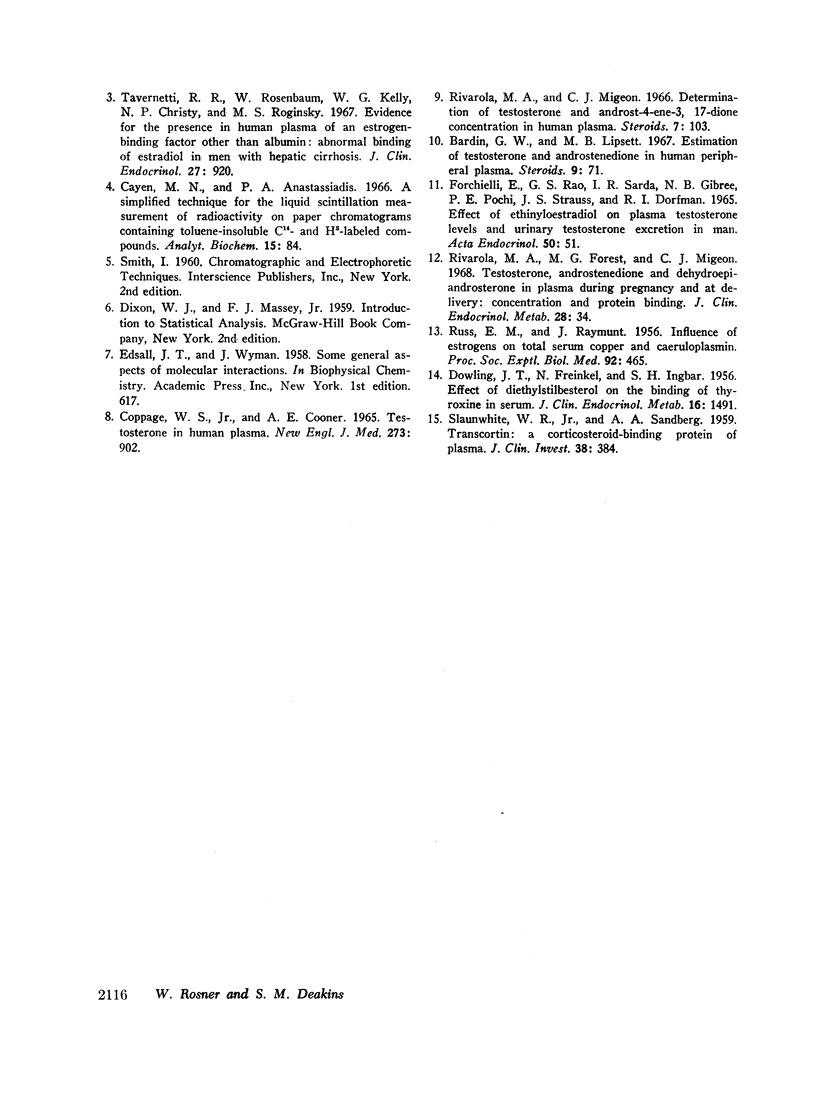
Selected References
These references are in PubMed. This may not be the complete list of references from this article.
- Bardin C. W., Lipsett M. B. Estimation of testosterone and androstenedione in human peripheral plasma. Steroids. 1967 Jan;9(1):71–84. doi: 10.1016/0039-128x(67)90090-6. [DOI] [PubMed] [Google Scholar]
- Cayen M. N., Anastassiadis P. A. A simplified technique for the liquid scintillation measurement of radioactivity on paper chromatograms containing toluene-insoluble C-14-and H-3-labeled compounds. Anal Biochem. 1966 Apr;15(1):84–92. doi: 10.1016/0003-2697(66)90250-8. [DOI] [PubMed] [Google Scholar]
- Coppage W. S., Jr, Cooner A. E. Testosterone in human plasma. N Engl J Med. 1965 Oct 21;273(17):902–907. doi: 10.1056/NEJM196510212731704. [DOI] [PubMed] [Google Scholar]
- DOWLING J. T., FREINKEL N., INGBAR S. H. Effect of diethylstilbestrol on the binding of thyroxine in serum. J Clin Endocrinol Metab. 1956 Nov;16(11):1491–1506. doi: 10.1210/jcem-16-11-1491. [DOI] [PubMed] [Google Scholar]
- Forchielli E., Rao G. S., Sarda I. R., Gibree N. B., Pochi P. E., Strauss J. S., Dorfman R. I. Effect of ethinyloestradiol on plasma testosterone levels and urinary testosterone excretion in man. Acta Endocrinol (Copenh) 1965 Sep;50(1):51–54. doi: 10.1530/acta.0.0500051. [DOI] [PubMed] [Google Scholar]
- Pearlman W. H., Crépy O. Steroid-protein interaction with particular reference to testosterone binding by human serum. J Biol Chem. 1967 Jan 25;242(2):182–189. [PubMed] [Google Scholar]
- RAYMUNT J., RUSS E. M. Influence of estrogens on total serum copper and caeruloplasmin. Proc Soc Exp Biol Med. 1956 Jul;92(3):465–466. doi: 10.3181/00379727-92-22512. [DOI] [PubMed] [Google Scholar]
- Rivarola M. A., Forest M. G., Migeon C. J. Testosterone, androstenedione and dehydroepiandrosterone in plasma during pregnancy and at delivery: concentration and protein binding. J Clin Endocrinol Metab. 1968 Jan;28(1):34–40. doi: 10.1210/jcem-28-1-34. [DOI] [PubMed] [Google Scholar]
- Rivarola M. A., Migeon C. J. Determination of testosterone and androst-4-ene-3, 17-dione concentration in human plasma. Steroids. 1966 Feb;7(2):103–117. doi: 10.1016/0039-128x(66)90019-5. [DOI] [PubMed] [Google Scholar]
- SLAUNWHITE W. R., Jr, SANDBERG A. A. Transcortin: a corticosteroid-binding protein of plasma. J Clin Invest. 1959 Feb;38(2):384–391. doi: 10.1172/JCI103812. [DOI] [PMC free article] [PubMed] [Google Scholar]
- Tavernetti R. R., Rosenbaum W., Kelly W. G., Christy N. P., Roginsky M. S. Evidence for the presence in human plasma of an estrogen-binding factor other than albumin: abnormal binding of estradiol in men with hepatic cirrhosis. J Clin Endocrinol Metab. 1967 Jul;27(7):920–926. doi: 10.1210/jcem-27-7-920. [DOI] [PubMed] [Google Scholar]


